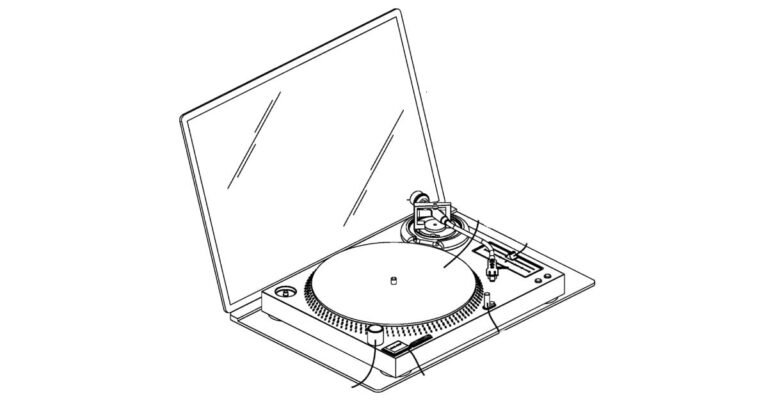with mass timber, haz arquitectura aims for a carbon-free architecture in barcelona
community focused and near carbon-free
Catalan practice Haz Arquitectura completes its timber-built Center for Community Life as an exploration of architecture which minimizes its carbon emissions. Warm and welcoming, the project is sited in the Trinitat Vella district of Barcelona, and houses various social programs organized by the local community. Driven by this focus on community, the overall project was designed with a ‘collaborative spirit to allow local people and social agents in the neighborhood to express themselves.’
The center stands as the first stage of a larger hub which will ultimately include community housing and homes for young people and the elderly.
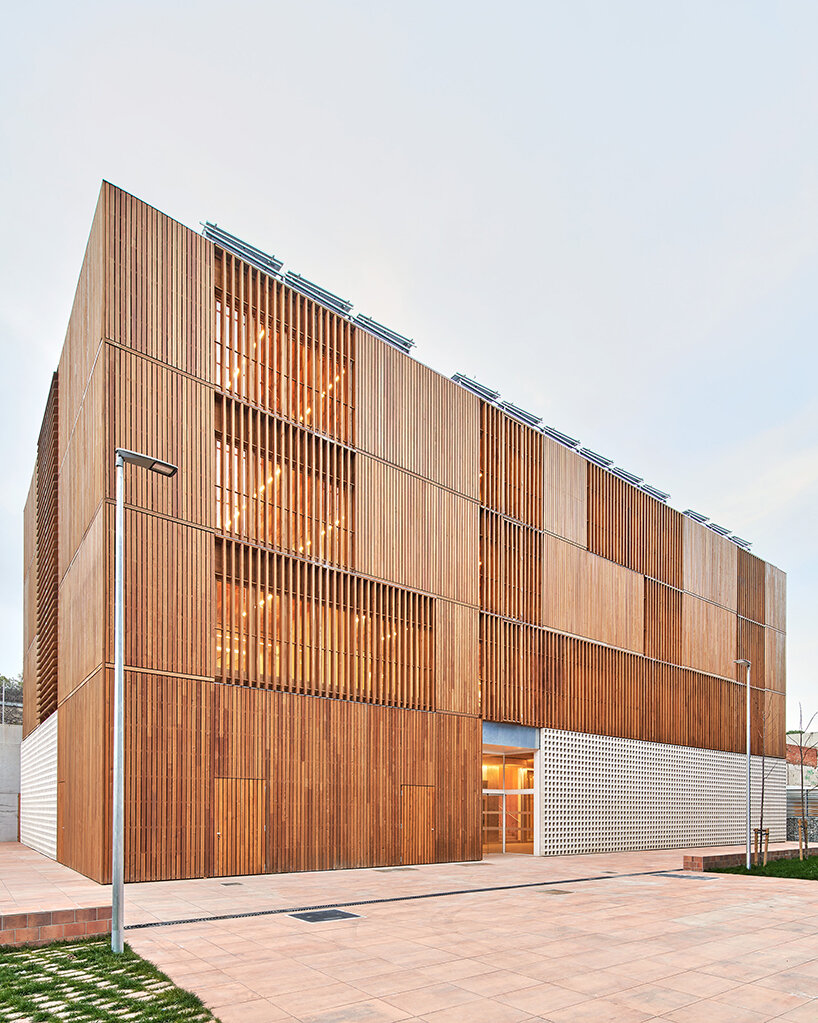 image © José Hevia
image © José Hevia
the importance of timber
Haz Arquitectura (see more here) designs its Trinitat Vella community center with a simple timber expression which will easily adapt to the future works which will soon become its neighbors. The most used material in the construction of the center is wood. The material had been chosen for its warmth, along with its uses in carbon footprint reduction, namely its qualities of CO2 absorption.
The design team describes the construction process: ‘A completely dry construction method was used. A metal framework of girders and pillars was erected, working in collaboration with a load- bearing system of radiata pine cross-laminated wood panels and ceilings that brace and give stability to the whole.
‘The interior claddings are limited to areas of plywood skirting to enable the passage of electrical and data connections, and otherwise the interiors are the bare CLT structure and the metal framework with fire-resistant paint.’
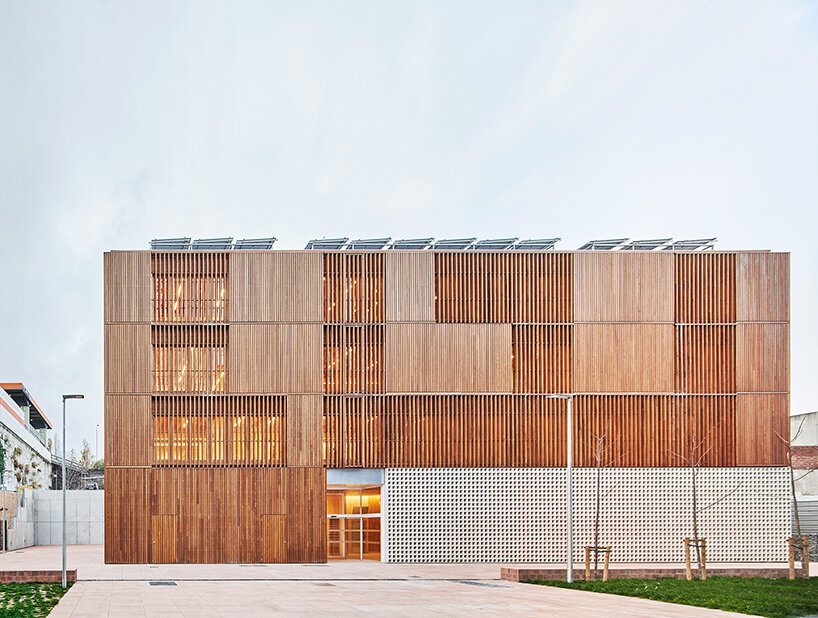
image © José Hevia
haz arquitectura’s passive design methods
The design team at Haz Arquitectura realizes its Trinitat Vella community center as a passive building, aiming to minimize both energy and material consumption. The team elaborates: ‘This passive design addresses all heating and cooling needs. To counteract the low thermal inertia of the wooden construction, the ventilation system harnesses the inertia of the ground, placing clean air tubes in the cutting in the hillside.
‘Taken from the ground, the air that circulates through the tubes is heated and released into the two covered courtyards that function as large conductors. The renewed air is cool in summer and warm in winter, recovering an old tradition of Mediterranean construction. All the rooms take in air from the courtyards and treat it with a fan coil unit to slightly raise or lower its temperature and humidity as needed.’
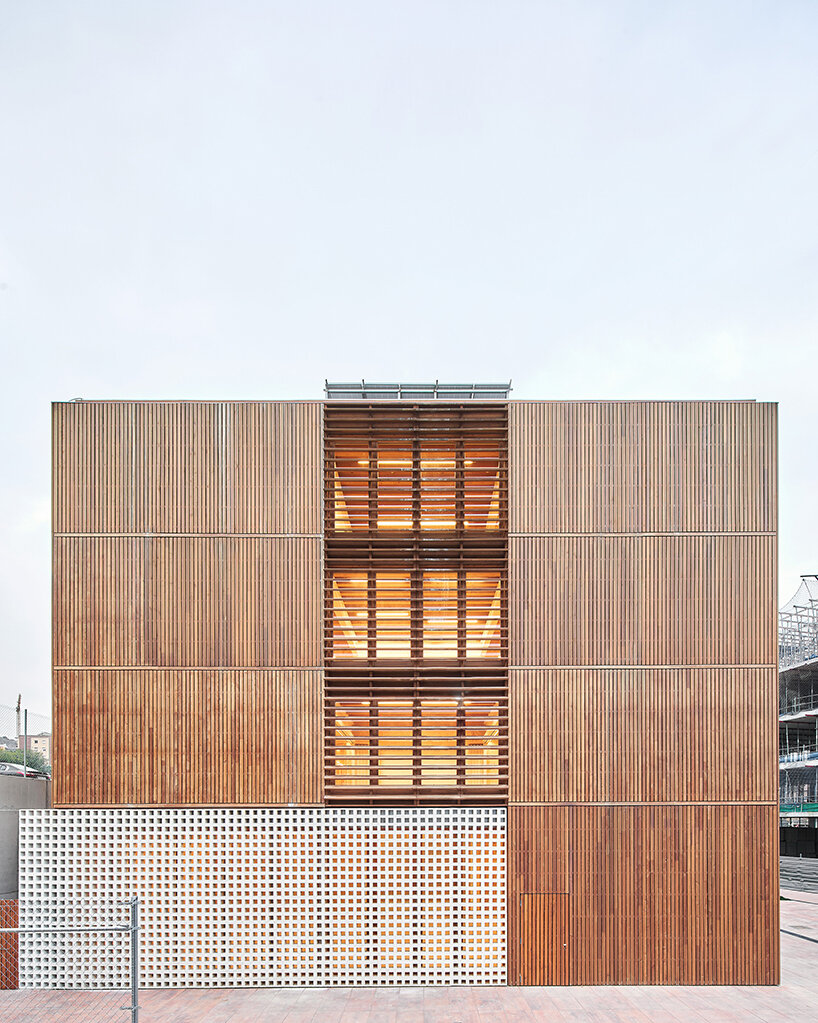
image © José Hevia
self-cooling and self-powered
The walls and doors along the corridors of the community center incorporate a specific design that directs air through the assembly toward central chimneys and to a rooftop service space. Here, the air is blown directly onto the machines inside, ensuring an ideal temperature no matter the condition outside. ‘This allows the machines to function with less effort and less electricity consumption,’ the architects note.
Finally, the use of photovoltaic panels along the roof generates 60,000W of electrical power annually, ‘making consumption very close to zero.’
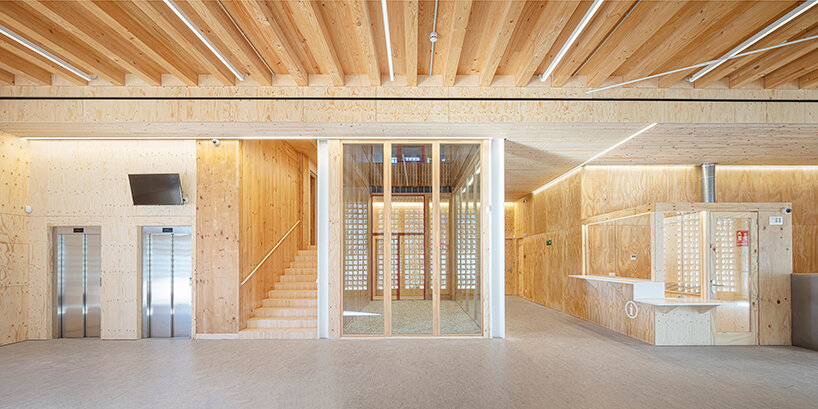
image © Adrià Goula | @adriagoulaphoto
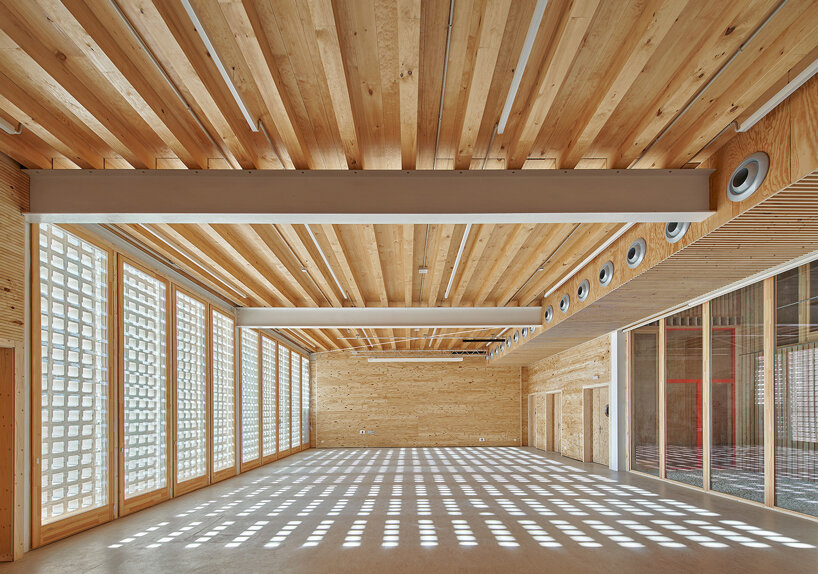
image © José Hevia


